Review: Garmin Asus Garminfone
Screen
The 320 by 480 pixel screen on the Garminfone looks sharp and colorful, even if some of the better competing Android phones might be using more pixels. It's not quite as bright as I'd like, but it held up very well in bright daylight. The balanced, even lighting makes it a good phone for navigating, day or night. Still, whites could be much brighter, as they lapse into a slight grey tone. Fonts were plenty sharp, so reading from the phone was always easy. Even though the 3.5-inch display is smaller than a dedicated portable navigation device, it was easy to read all the onscreen information in the navigation mode.
Sound
Under ideal conditions, the Garminfone sounds very good, crisp and loud. But for a phone so dedicated to navigation, it would have been nice for Garmin Asus to go the extra mile with the phone's loudspeaker capabilities. The earpiece was fine for calls and conversations. I heard some occasional hiss, but nothing to worry about. Some callers reported a slightly digitized sound to my voice, but none had trouble hearing my end of the conversation. The phone also worked perfectly when I was talking to voice activated systems, like checking my bank account balance, for instance.
The speaker on the Garminfone is a large panel on the back. The curving sides of the phone make sure the speaker isn't obscured when the device is face up, so you can still carry on a speakerphone conversation or even listen to some tunes while the phone is lying on your desk.
In the car, the speaker volume was usually adequate, though at higher speeds, with the A/C turned up (I do live in Texas, after all), and a little music playing, I wasn't able to hear the nav voice unless I strained to listen. I wouldn't ask Garmin Asus to boost the speaker, though, as it already distorted the sound at its upper limit. Instead, I would have liked an FM transmitter on board so that I can play music and listen to nav instructions through my car stereo. Even if this was only built into the included car dock, that would be a step up.
The included ringtones were nothing special, the standard pop tune selection. Rings were plenty loud, though. I could easily hear the ringing in my pocket or from another part of my house.
Signal
I got a signal with the T-Mobile Garminfone even in spots where T-Mobile is usually dead to me. Even though the Garminfone usually showed the same signal strength as my Google Nexus One, there were plenty of times when the Garminfone could use the data network while the N1 stalled on me. Wi-Fi signal was equally strong, and again the phone connected to my home network in spots where many devices can't.
More important, though, is the GPS performance. I found the Garminfone to be on par with a good smartphone, but some times it was way, way off. In the time to get a first fix on my position, the Garminfone found me a couple seconds faster than my Nexus One. But while the Nexus One located me in my office with the shades drawn, the Garminfone had a little more trouble pinpointing my position. This caused no problems during navigation, though the Garminfone needs to be much more accurate if Garmin Asus wants to claim the nav crown in smartphone land. On some highways, the Garminfone had trouble determining if I was on the highway or the nearby access road.
Worst of all, though, was when the Garminfone placed me in another state. Kentucky, to be exact. I live in Texas, but the phone would often find me in Kentucky instead, and not a consistent Kentucky location. Apparently, I get around the Bluegrass state quite a bit. This happened to me often, almost every time I opened the map when GPS reception was poor, according to the phone's own GPS signal bars. The phone always corrected itself, but it sometimes took minutes to find my real location.
Battery
Battery life on the Garminfone was disappointing. Not bad, but for a phone that relies so heavily on the battery-draining GPS receiver, it should have been much better. I got just over 5 hours of talking time from the Garminfone, which is perfectly inline with Garmin's estimates. The phone uses a 1150 mAh battery, but many high-end smartphones today are using 1400 mAh batteries or larger. I would accept an extra millimeter and a few extra grams weight for another two hours of talking time. The saving grace for the battery is that I often used the phone to navigate in my car, and the Garminfone also charges in the car dock. But this phone wouldn't last through a long hike or a day walking through a big city if you leave the GPS turned on.


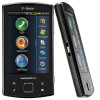 T-Mobile Will Carry Android Powered Garminfone
T-Mobile Will Carry Android Powered Garminfone
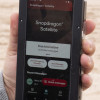 Qualcomm Taps Iridium for Satellite Connectivity
Qualcomm Taps Iridium for Satellite Connectivity
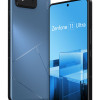 Asus Goes Big with Zenfone 11 Ultra
Asus Goes Big with Zenfone 11 Ultra
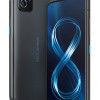 Asus Zenfone 8 is a Compact Flagship
Asus Zenfone 8 is a Compact Flagship
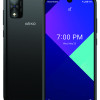 Wiko Drops a Better Ride for Boost
Wiko Drops a Better Ride for Boost
 Garmin Asus Garminfone
Garmin Asus Garminfone


